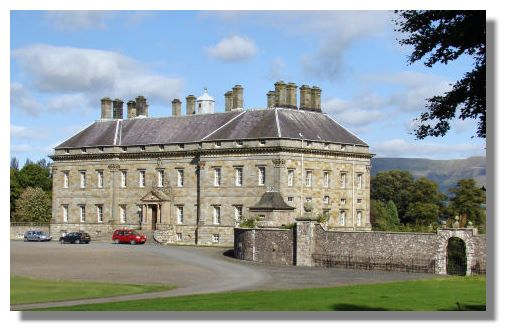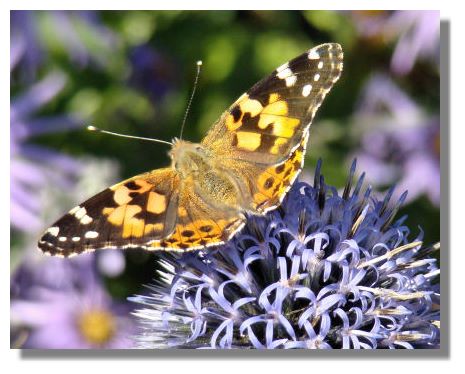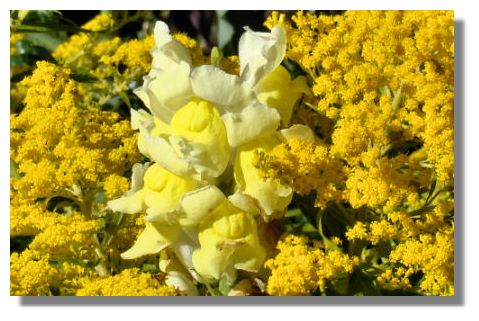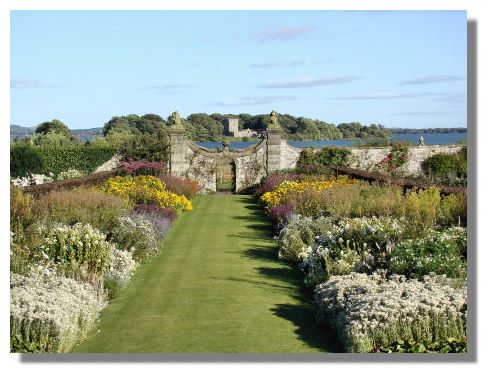Each week the Rampant Scotland Newsletter includes a number of photographs which illustrate the weather and the seasons, plus the flora and fauna of the current week around Scotland. This separate "colour supplement" displays some more pictures, in a larger format. Here is this week's crop of Scottish views!
Construction of Kinross House was begun in 1686, by the architect Sir William Bruce as his own home. Bruce was a key figure in introducing the Palladian style into Scotland and has been compared to the pioneering English architects Inigo Jones and Christopher Wren. Bruce played a role in the Restoration of Charles II and was rewarded with lucrative official appointments, including that of Surveyor General of the King's Works in Scotland, effectively the "king's architect". Kinross House is regarded as one of his finest works, and was called by Daniel Defoe "the most beautiful and regular piece of Architecture in Scotland". Even so, it was unoccupied by subsequent owners for much of the 19th century and by 1902 the formal garden was a wasteland. Then the owner, Sir Basil Montgomery, decided to live in the house again and to restore the gardens, remaking the glorious formal garden, planting yew hedges and trees, recreating the formal rose garden and laying out the lovely herbaceous borders. Today, the garden at Kinross House ranks as one of the finest formal gardens in Scotland.
Butterflies of all sorts seem to enjoy feeding on the globular flowers of Echinops - the butterfly here is a Painted Lady (known in North America as the Cosmopolite) which will have flown all the way from North Africa and the Mediterranean to Britain in May and June. Any offspring they produce here die in the autumn as they need a warmer climate to survive.
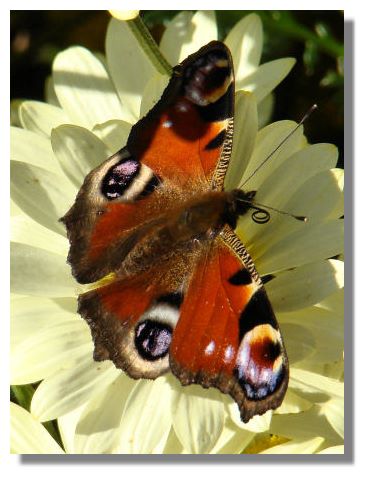
The European Peacock Butterfly is a permanent resident in Scotland and hibernates in sheltered corners in sheds or even inside houses. You can see its curled up tongue (actually it's called a proboscis) in this picture. The eyespots on the Peacock are exposed when the butterfly is disturbed by a potential predator (such as a bird - but it is done also to ward off other insects). They flick their wings open and make a hissing noise. The open wings create an impression of the face of a mammal such as a cat, and this deters the predator for long enough for the butterfly to escape (usually).
The Goldenrod (Solidago) plant is well named with its frothy spikes of long-lasting, golden yellow flowers. Somehow, an Antirrhinum has managed to force its way through the Goldenrod to add another shade of yellow to the picture.
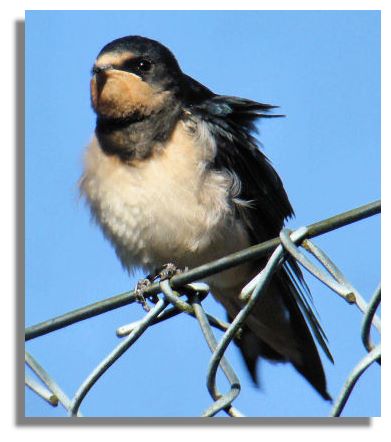
The last of the Swallows have been feeding furiously on insects before they undertake the long journey back over Europe, the Mediterranean and the Sahara Desert to return to their winter quarters in southern Africa - 6,000 miles away. This one, sitting on a fence, looks like a young bird which was born here during the summer - its feathers are being ruffled by a strong wind.
Sir William Bruce designed his home at Kinross House to have a clear view of the historic castle on the island on Loch Leven. The best view is from the house itself, but different views can be obtained as you walk towards the splendid gates (neatly scalloped to give an uninterrupted view of the castle) at the end of the herbaceous border.
If you want to look back at earlier editions of this Colour Supplement, there is an Index Page
